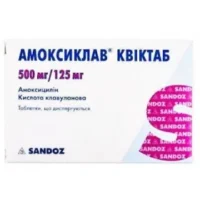Description
Amicyl (Amikacin) 0.5 g. intravenous
Ingredients
Amikacin sulfate
Dosage
The usual adult dose is 15 mg/kg/day, given in 2 or 3 divided doses.
Indications
Amicyl (Amikacin) 0.5 g. intravenous is indicated for the treatment of serious infections caused by susceptible strains of Gram-negative bacteria.
Contraindications
Do not use in patients with a known hypersensitivity to amikacin or any other aminoglycoside.
Directions
Administer by intravenous infusion over a period of 30-60 minutes.
Scientific Evidence
Amikacin, the active ingredient in Amicyl, is a broad-spectrum aminoglycoside antibiotic that works by inhibiting bacterial protein synthesis. Studies have shown its efficacy in treating severe infections caused by multidrug-resistant Gram-negative bacteria.
Additional Information
It is important to monitor renal function regularly during treatment with Amicyl due to the potential for nephrotoxicity. This medication should be used with caution in patients with pre-existing renal impairment.
Amikacin has been extensively studied in clinical trials for its effectiveness in treating various infections, including those resistant to other antibiotics. Research has demonstrated its role as a valuable option in the management of serious bacterial infections.





